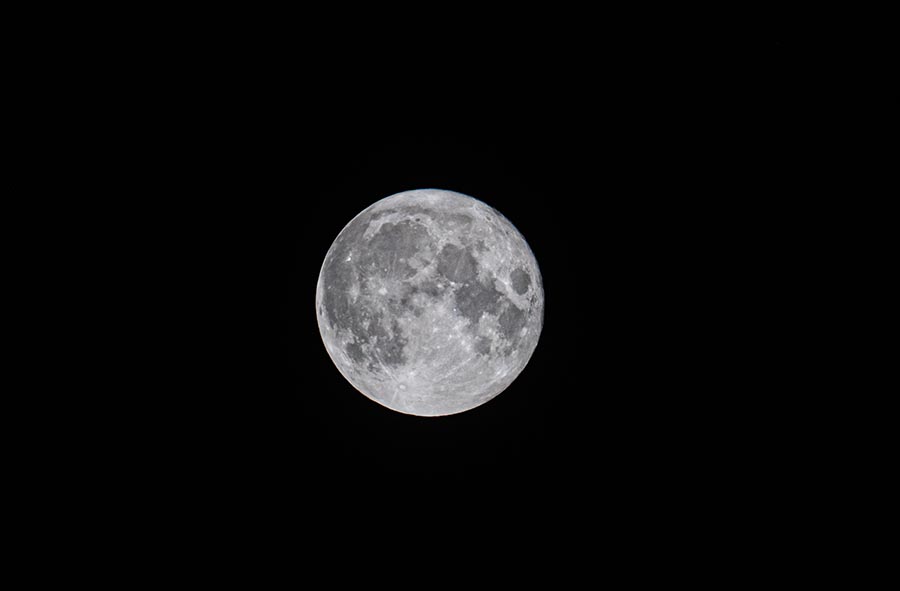Moon photography is an exciting and rewarding hobby that allows you to capture the enchanting beauty of the moon. This guide will provide tips and techniques to help beginners take stunning moon photos. As you read on, you’ll learn about the necessary equipment, camera settings, composition techniques, and post-processing tips that will elevate your moon images.
Essential Gear for Capturing the Moon
Camera
A DSLR or mirrorless camera with manual mode is ideal for moon photography, as it allows you to control the exposure settings. However, you can also use a bridge or advanced compact cameras with manual controls.
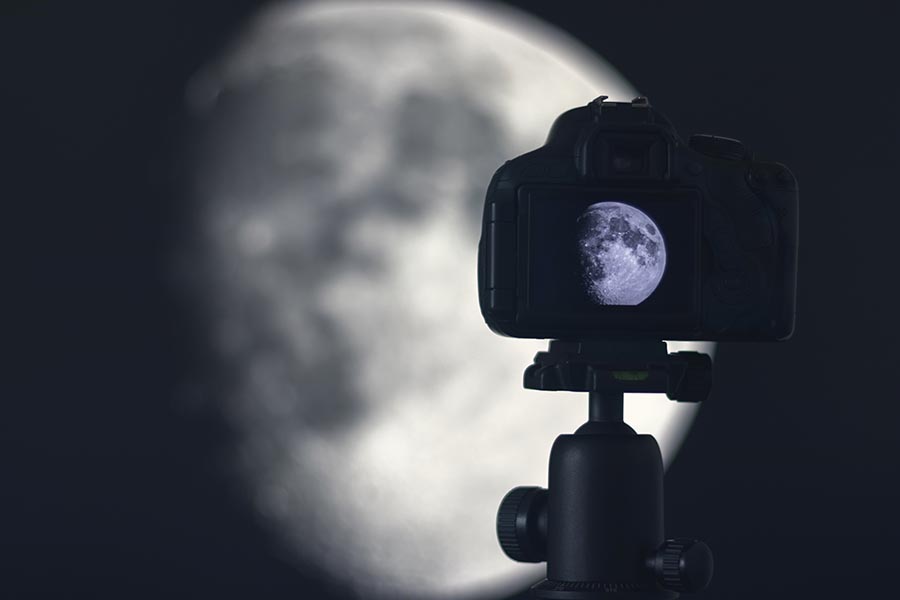
Lens
To capture detailed moon images with greater clarity, it is advisable to use a telephoto lens with a focal length of 200mm or longer. This allows for a larger moon in your frame, enabling you to emphasize the intricate features of the lunar surface.
Tripod
A sturdy tripod is essential for stabilizing your camera during long exposures. To ensure sharp, clear images, do this to prevent camera shake.
Remote Shutter Release
A remote shutter release or intervalometer allows you to trigger your camera’s shutter without touching it, minimizing the risk of camera shake and resulting in sharper images.
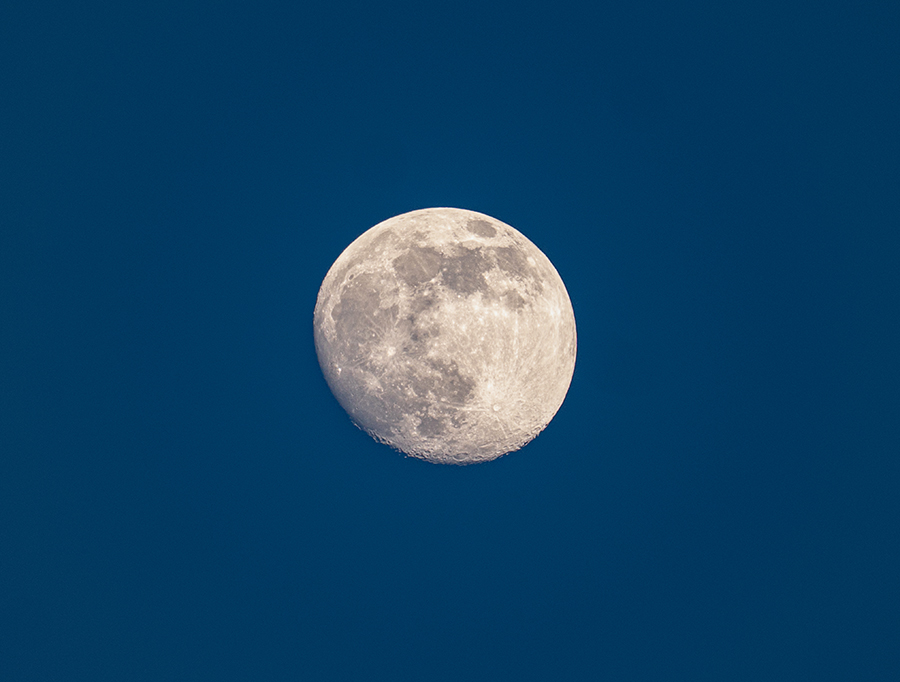
Camera Settings for Moon Photography
Proper camera settings are essential for capturing clear and detailed images of the moon. Here’s a more in-depth look at the settings you should use:
Manual Mode
Manual mode (M) gives you complete control over your camera’s exposure settings, allowing you to fine-tune your adjustments to get the perfect shot of the moon.
Aperture
The aperture setting determines the amount of light that enters your camera. For moon photography, use a smaller aperture (higher f-number), like f/8 to f/11. Ensuring a sharp image and sufficient depth of field will keep both the moon and any foreground elements in focus.
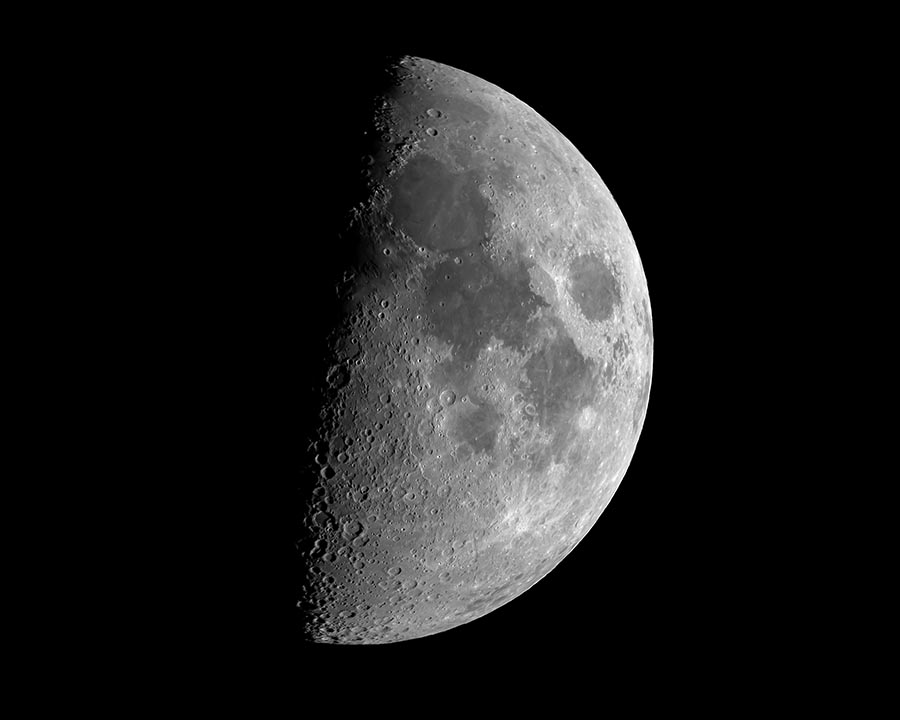
Shutter Speed
Adjust the shutter speed to control the amount of light that hits your camera’s sensor. For moon images, it is recommended to use a faster shutter speed, such as 1/125 to 1/250 seconds. Preventing overexposure and reducing motion blur caused by the moon’s movement across the sky is achievable by implementing this technique.
ISO
The ISO setting affects your camera’s sensitivity to light. Setting the ISO to the lowest possible value, usually around 100 or 200, can help reduce image noise and produce cleaner and clearer moon images.
Focus
Use manual focus and your camera’s live view feature or an attached monitor to ensure sharp focus on the moon. Zoom in on the live view to fine-tune the focus, ensuring the lunar surface appears sharp and well-defined.
Explore More:
Composition Techniques for Stunning Moon Photos
Rule of Thirds
To create a visually appealing image, place the moon at one of the intersecting points of the imaginary grid created by dividing your frame into thirds, both horizontally and vertically.
Including Foreground Elements
Adding interesting foreground elements, such as silhouettes of trees or buildings, can add depth and context to your lunar images and highlight the moon’s size and position in the sky.
Using Negative Space
The negative space in an image refers to the area around the main subject. In lunar photography, using the dark sky as a negative space can create a sense of isolation and emphasize the moon’s beauty. Experiment with different amounts of negative space to find a composition that works best for your image.
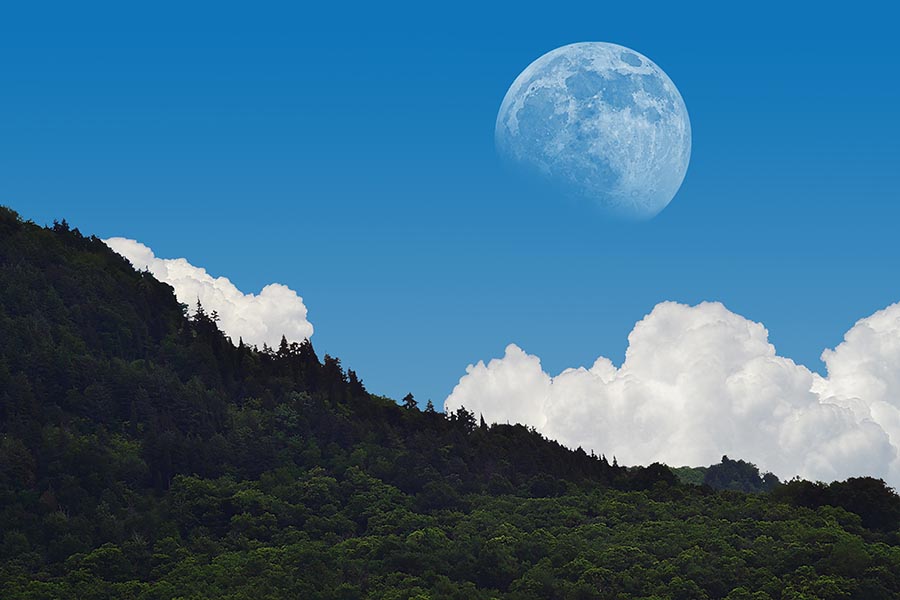
Post-Processing Techniques
Post-processing is the process of editing your photos after they have been taken. You can enhance your moon images and bring out hidden details by using editing software like Adobe Lightroom or Photoshop. Here are some key post-processing techniques for moon photography:
- Crop: Crop your image to remove distractions or unwanted elements and improve the overall composition. You can also use cropping to focus more closely on the moon itself.
- Exposure and Contrast: Fine-tuning exposure, highlights, shadows, whites, and blacks create a well-balanced image. This enhances lunar surface details and visual appeal.
- Clarity and Sharpness: Enhancing the clarity and sharpness settings can help bring out the texture and definition of the moon’s surface, resulting in a more detailed and professional-looking moon image.
- Color Temperature: Fine-tuning the color temperature of your moon photo can help create a cooler or warmer tone that harmonizes with your creative vision, ultimately enhancing the mood and atmosphere of the image.
- Noise Reduction: Applying noise reduction techniques can help reduce graininess or noise in your moon photo, particularly if you use a higher ISO setting when capturing the image. This will result in a cleaner and smoother final product.
Using the right camera settings and post-processing techniques, you can create stunning, detailed images of the moon that showcase its beauty and captivate your audience.
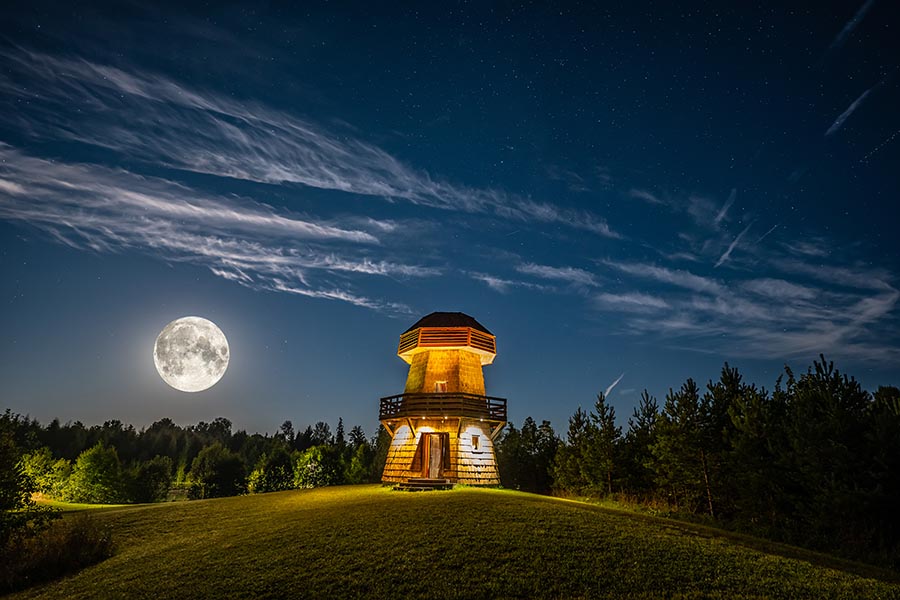
Tips for Lunar Eclipse and Supermoon Photography
Lunar eclipses and supermoons are special events that offer unique opportunities for lunar photographers. Here are some leads to help you capture these celestial phenomena:
- Plan: Research the dates, times, and locations of upcoming lunar events. Apps like PhotoPills can help you visualize the moon’s position and plan your shots.
- Arrive early: Arrive early at your location to set up your gear and compose your shot before the event.
- Bracket exposures: The moon’s brightness will change dramatically during a lunar eclipse. Capture a range of exposures using exposure bracketing, which can later be combined during post-processing to create a more dynamic and well-exposed moon image.
- Capture the entire event: Create a time-lapse or series of images that showcase the progression of the eclipse or the changing size and brightness of a supermoon.
End Note
Moon photography can be a captivating and rewarding hobby, providing opportunities to explore the beauty of the night sky and capture breathtaking images of the moon. With the right equipment, camera settings, composition techniques, and post-processing skills, even beginners can create stunning moon photos. So, grab your camera, head out under the moonlit sky, and capture the enchanting allure of the moon. Follow the tips in this article to enhance your moon photography skills and take breathtaking photos.
FAQs
While taking moon photos with a smartphone is possible, the limited zoom capabilities and manual controls may result in less detailed and lower-quality images. However, some smartphones have dedicated “moon modes” or third-party apps that can help improve your lunar photography.
Use manual mode on your camera and start with a smaller aperture (f/8 to f/11), a faster shutter speed (1/125 to 1/250 seconds), and the lowest possible ISO (usually 100 or 200). Check your histogram and adjust the settings as needed to avoid overexposure.
To capture both the moon and stars in a single image, it is recommended to use a wider lens and a slower shutter speed, which will enable more light to enter the camera and produce a well-exposed and balanced final image. If you capture the moon and stars in your photo, remember that this may result in an overexposed moon. To address this, you can take separate exposures for the moon and stars, then combine them during post-processing for a well-balanced final image.
Use a telephoto lens with a focal length of 200mm or longer, manually focus on the moon, and shoot in RAW format to capture the most detail. In post-processing, increase clarity and sharpness to bring out the lunar surface’s features.
Photographing the moon during a lunar eclipse or supermoon can produce particularly spectacular results, but the moon can be photographed at any time. The waxing or waning phases are generally the best times, as the sunlight creates shadows and highlights that reveal the details of the lunar surface.


